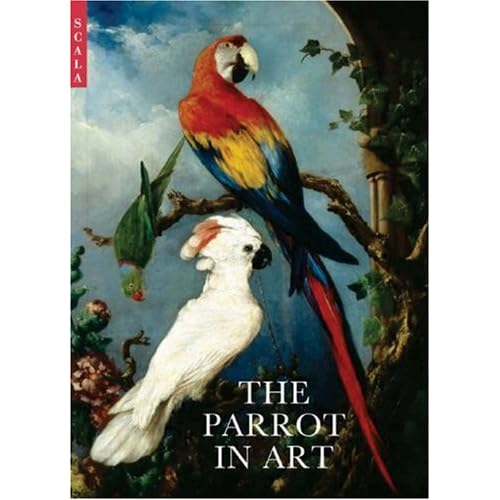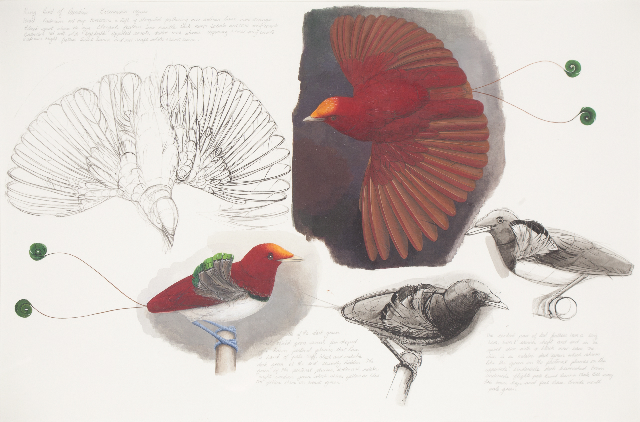The original image I found of hers was in a mix of modern and contemporary artists, and it interested me because of the organic subject matter and attention to detail. When I searched for more of her works, I was met with a overwhelming collection of parrots and wild birds - turns out, she was most famous for her avian depictions. This seemed perfect, since I'm particularly interested in nature and animals in art, and I found her style to be very appealing - something I would want to strive for in my own artistic pursuits.
Elizabeth Butterworth was an English artist, born in Rochdale, Lancashire in 1949. She studied at the Rochdale School of Art from 1966 to 1968, then at Maidstone College of Art from 1968 to 1971, and finally at the Royal College of Art in London from 1971 to 1974. There a number of solo exhibits of her work and she is also featured in several publications, most of which highlight her favorite subject matter: birds. Specifically, she is known for her elaborate paintings and drawings of macaws and parrots.
(Source: http://www.scalapublishers.com/fineart.php?ID=210)
(Source: http://www.redfern-gallery.com/DesktopDefault.aspx?tabid=6&tabindex=5&objectid=337407)
She uses bold colors to bring out the character in subject matter, but also clearly understands the fundamentals of avian anatomy. Looking at her study drawings of feathers reminded me of the study drawings we do in class as well - however, the plethora of sketches I found under her name didn't appear to be in preparation for a final piece. Rather, as many modern artists do, she studied her favorite subject matter for the sake of understanding the textures, anatomy, and function of birds so that she could work not only from reference but produce images of exotic birds in imagined scenarios while still retaining a stunning degree of realism and believability.
(Source: http://londonist.com/2012/09/art-review-jerwood-drawing-prize-2012-jerwood-space.php/butterworth_elizabeth-king-bird-of-paradise)
She demonstrated her mastery over her subject matter in studies such as the one above: she utilized lines and contours alone to depict her avians, then integrated shading and depth and we recently studied to give her subject realism and weight on the page. Finally, she could animate her subjects with color - which tended to be vibrant reds and blues. While the colors in her works were bold, she also retained realism with her use of shadows, precision and even the principles of perspective we recently began in class.
I'll conclude with perhaps on of my favorite of her works: its a strict black and white drawing like we have been studying in class, and I think it integrates many of the principles relevant to our studies such as perspective, shading, lines and thoughtful composition. She manages to capture detail and depth in the image without any color, and really utilizes a full scale of values to give the drawing weight.
(Source: http://www.elizabethbutterworth.com/parrots_cockatoos-9.html )




No comments:
Post a Comment